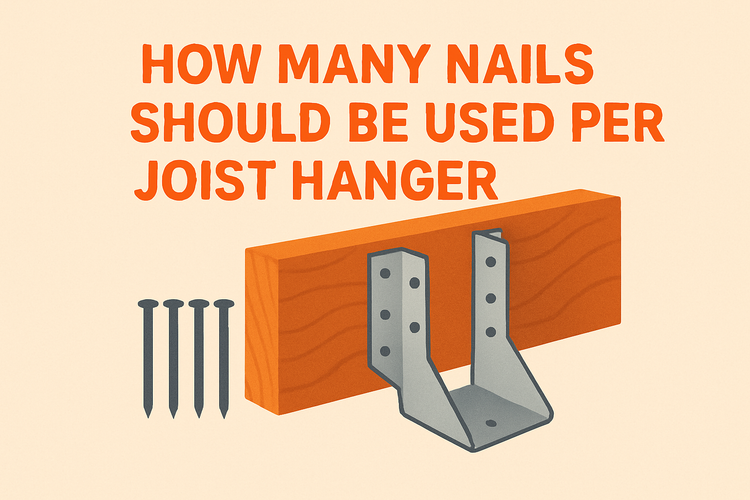How Many Nails Should Be Used Per Joist Hanger

Understanding the Importance of Proper Nailing for Joist Hangers
Using the correct number and type of nails in joist hangers is crucial to ensure the structural integrity and safety of your decking or flooring project. Skimping on nails or using the wrong size can compromise the load-bearing capacity of the hanger.
Joist hangers are designed with designated nail holes, and manufacturers clearly specify the number required. Adhering to these instructions is key, and selecting quality products from trusted suppliers such as our Joist Hangers collection helps mitigate the risks of failure under load.
Manufacturer Guidelines for Nailing Joist Hangers
Each joist hanger comes with a manufacturer specification detailing the exact number of nails and the types to be used in different holes. Common models may require 10-16 nails, with variations depending on the load classification and size of the hanger itself.
Nails used for joist hangers are often shorter and thicker than conventional nails to maintain tight, secure fastening. Type 10d or 16d common nails are frequently recommended. For metal-plated hangers, approved nails such as those found in our Screws and Nails range should always be used to avoid corrosion and poor performance over time.
A common mistake is using fewer than specified nails to speed up the process or reduce costs—this not only voids warranty but can be a serious safety hazard. Proper spacing and nailing into solid structural elements are just as important as the number of nails installed.
Impact of Incorrect Nailing on Structural Integrity
Improper nailing, including using fewer than required or incorrect types, drastically reduces the hanger's strength. This can cause deck failures, sagging floors, or in worse cases, structural collapse, especially in high-load areas.
When joist hangers fail due to nailing errors, it often results in complete disconnection between joists and beams. Given that flooring and ceiling systems depend on these connections for stability, it’s essential to utilize every nail hole as instructed.
The issue becomes more prominent during seasonal load variations or seismic shifts, where even a minor inconsistency in stress distribution could lead to visible deflections or noise from loose joists. Reinforcing other structural elements with matching hardware such as Post Base brackets or Angle Brackets can support better load sharing when properly nailed in all fastening points.
Choosing the Right Nails for the Job
Using just any nail isn’t enough; the correct style and finish matter. For most joist hangers, galvanized nails are preferred for corrosion resistance. Hot-dipped galvanized or even stainless steel nails are a must for outdoor or marine environments.
Nail dimensions often range between 1.5 to 3.5 inches for different parts of the hanger—longer nails are used for ledger board fastening, while shorter ones connect the joist to the hanger face. It’s also vital to avoid screws unless specifically approved by the hanger manufacturer, as they don’t offer the shear strength needed for heavy loads like true hanger nails do.
Professional-grade nails, available in our dedicated Screws and Nails collection, ensure compatibility and reliability with all related timber connectors and joist hanger products.
Best Practices for Nailing Joist Hangers
To ensure proper installation, always use a hammer or nail gun designed for connector nails. Misalignment, under-driven nails, or failure to drive into load-bearing framing lumber can diminish the holding power of the hanger.
A builder should always verify alignment before fastening, ensuring that the hanger is flush with framing elements. Starting at the corners and then working inward can help maintain structural centering. Retrofitting or correcting mistakes later often compromises the connection’s strength, so precision at the installation stage is vital.
In high-wind or seismic zones, additional reinforcement ties from our High Wind Ties & Timber Connectors collection are recommended. These components work in tandem with complete and accurate nailing to secure the entire structure against shifting forces.
